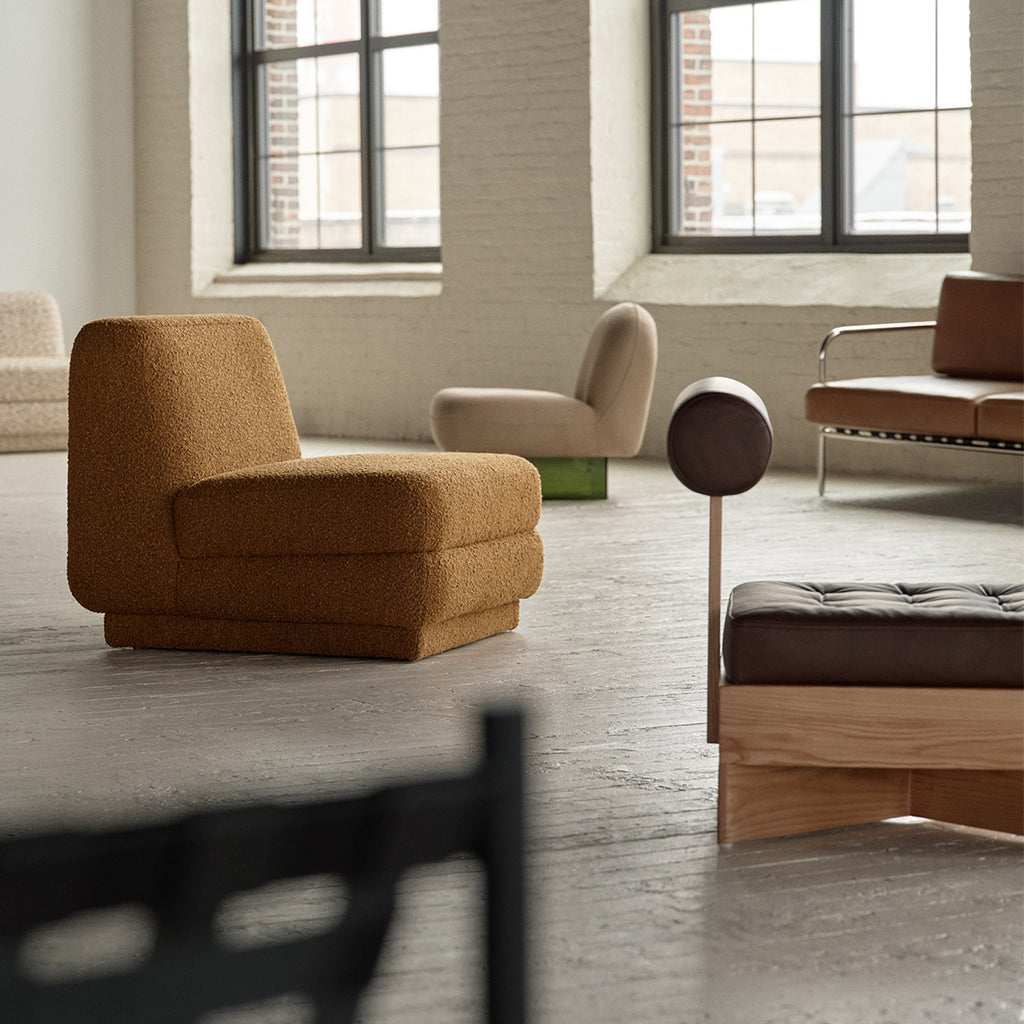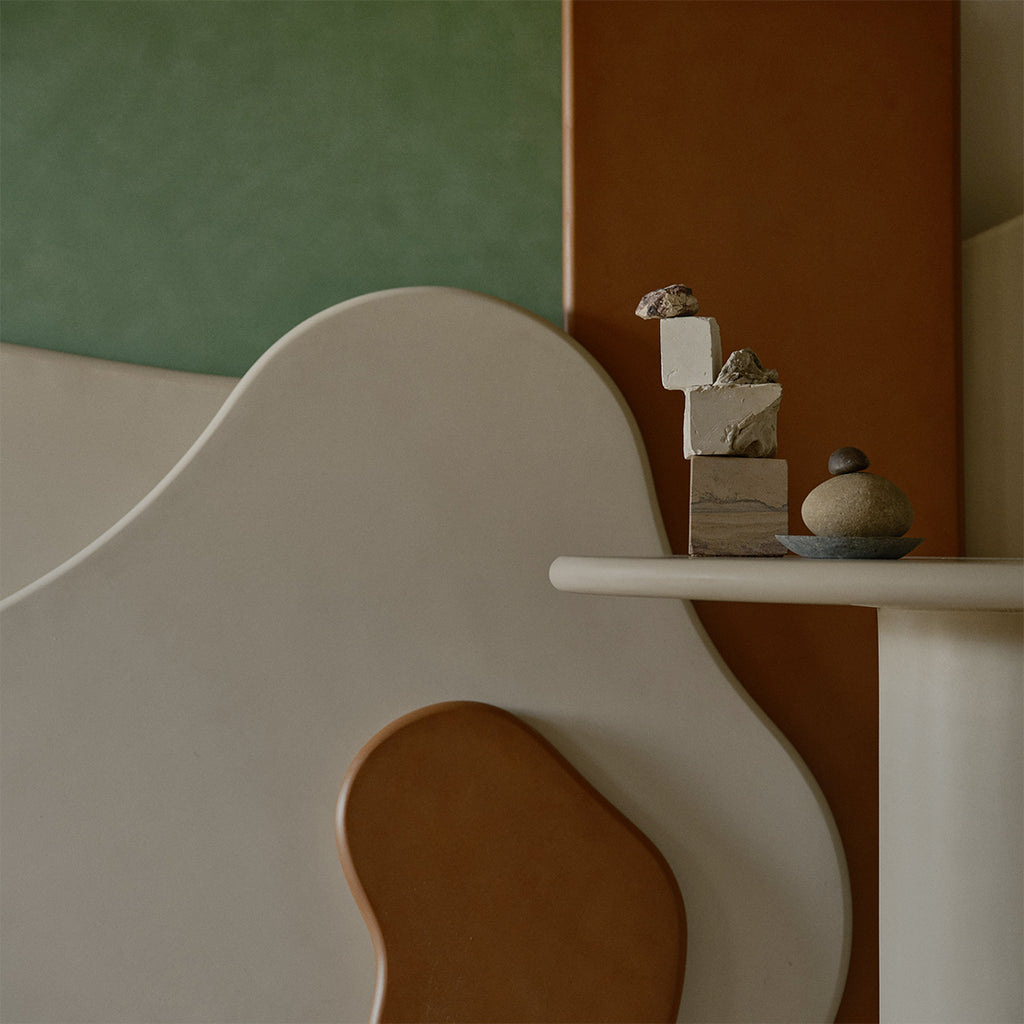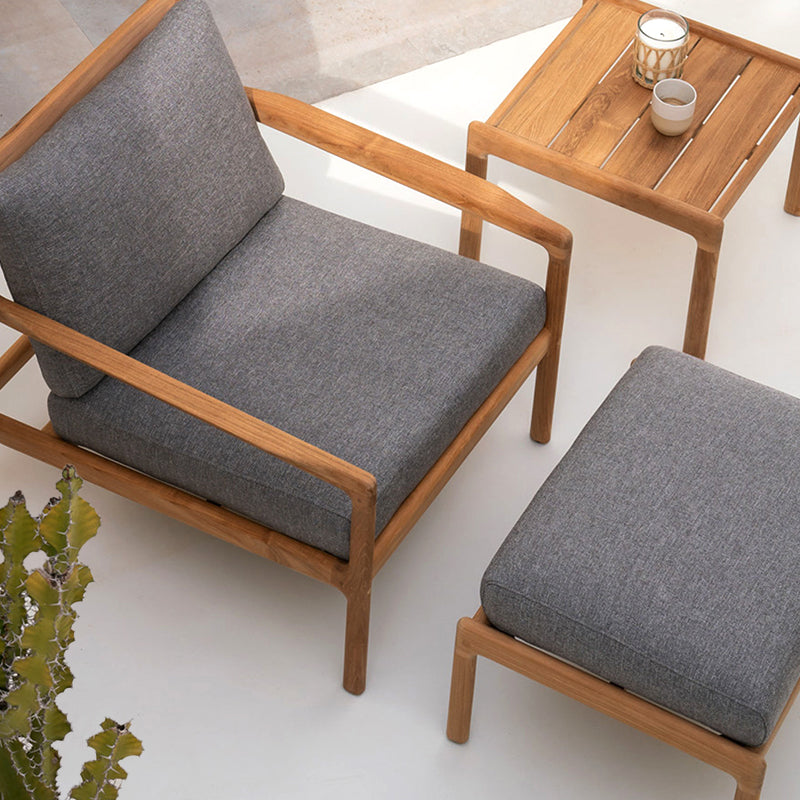06.20.2023
Outdoor Furniture: Choosing the
Right Pieces for Your Space
BECAUSE NO TWO OUTDOOR SPACES ARE THE SAME
By Heather Bien
For those of us who don’t have the privilege of living in a perpetually warm climate, the outdoor season has finally arrived. From al fresco meals enjoyed beneath the glow of bistro lights to afternoons spent lounging in the backyard with a good book, our indoor spaces move out and we’re reminded of how refreshing it is to live in the fresh air.
Of course, the necessary backdrop to all of this is a great outdoor furniture setup, and we asked four design experts for their best tips on how to choose the right outdoor furniture. From the best outdoor furniture for your region to the best materials to how to prepare your space for the elements, here’s what experts had to say.

Mix and Match Outdoor Materials and Finishes
While it can be tempting to buy a full set of matching rattan or teak furniture, mixing finishes on your outdoor furniture can give you a more collected, styled look. Yet, while most people no longer buy bedroom or living room suites, they’re still likely to pick up an entire collection of outdoor furniture and call it a day.
Mark Cutler, co-founder of CutlerSchultz along with Nichole Schulze, recommends, “Try to avoid buying an entire suite of the same furniture. While keeping all the seating cohesive, mix up your selection of tables—etcetera—to create a more collected look.
“I love to mix and match different outdoor finishes,” adds Jennifer Nichols of J Nichols Design Studio. She says, “In one of our current projects, we mixed metal outdoor swivel chairs with teak tables. I love the contrast!”
Also, the range of outdoor furniture materials is continuously expanding. Lauren Robbins of Lauren Robbins Interiors notes that outdoor furniture has come a long way since wrought iron, rust-prone metal, and sweltering plastic were the only options. She says, “Fabric and furnishing manufacturers have made great strides, offering mildew and mold-resistant, anti-fade fabrics, performance rugs, and weatherproof furnishings.”


Consider Your Climate
Cutler says, “We are based in Los Angeles and blessed with a climate that allows outdoor entertaining essentially all year round, so our outdoor furniture is going to get a lot more use.” While that means you don’t have to worry about off-season storage and extreme cold damaging materials, it does mean that furniture will take a beating from the sun.
Cutler recommends, “To combat this, use powder-coated aluminum frames, they are light and incredibly durable, and lean toward lighter colored fabrics as they fade less and do not get as hot.”
Meanwhile, on the East Coast and throughout the South, Cutler focuses on storm and waterproof selections, particularly when it comes to covers (more on those in a minute!)
Kathy Kuo, founder and CEO of Kathy Kuo Home, explains, “If you live in a climate where you know you're likely to want to store your outdoor pieces during the winter, consider lighter-weight woven items that are going to be easier to pick up and move into a garage or storage space."
And, if you have waterfront property, Robbins adds, “Salt air is not a great fit for wrought iron furniture which will begin to rust with time.”
“If you live in a climate where you know you’re likely to want to store your outdoor pieces during the winter, consider lighter weight woven items that are going to be easier to pick up and move into a garage or storage space.”

Choose the Right Cushion Coverage
Adding cushions to outdoor furniture gives a patio a relaxing, lounge-inspired feel. But, as Nichols shares, they require more upkeep. Cushions on outdoor seating make each piece extra comfy. The trade-off is that to protect the longevity of the cushions you need to cover the furniture in seasons of heavy rain or snow.” She explains that excessive moisture can lead to dry rot in cushions and sling-style outdoor chairs.
Outdoor cushions can be protected by adding waterproof covers or you can store them indoors in a dry area between seasons or during extreme weather. Cutler explains, “In areas where summer is shorter and weather is unpredictable, you want to create a situation that the furniture is ready to go when you are, so a good cover will allow you to use your pieces even if it rained the night before.”
Nichols adds one more tip, “If you are protecting your outdoor dining table with a waterproof cover, make sure to tent the middle of the table so the water will roll off and not puddle in the middle of the table.


Select Light or Heavy Weight Depending on Use
“This is furniture that is often moved around, so keep that in mind,” says Cutler. This has multiple implications. First, you want to be careful not to damage your outdoor surface area. “A stone terrace can easily be scraped up by heavy furniture, so think about that as you make selections,” says Cutler. Choose lighter-weight furniture in an area where you’ll be moving pieces around regularly.
On the other hand, he says, “On a Deck, weight is always going to be an issue, and selecting smaller, more compact pieces will give you more safety.”


Opt for Double Duty Furniture
“I like to use furniture that can be reinvented to serve multiple purposes,” says Robbins. Particularly when you’re dealing with a smaller space or one that needs to serve multiple purposes from dining to relaxing. “A console or side table can easily double as a small dining table if selected right the first time,” explains Robbins. She suggests using ottomans or stools that can slide under coffee or side tables to accommodate additional guests. She adds, “Cocktail tables can become game tables with an ottoman pulled up at just the right level.”











